
Originated from France in the 17th century, the purpose of bidets was to enable people to clean their private parts after using the toilet. It’s a more hygienic alternative to toilet paper. Bidets have received several upgrades since their first appearance in France, and the Japanese reinvented and pioneered the industry. They come in different sizes and shapes and are compatible with almost every existing toilet. A bidet toilet seat, for example, is an additional fixture added onto an existing toilet. It’s now commonly used in Japan and other countries in Europe and Latin America.
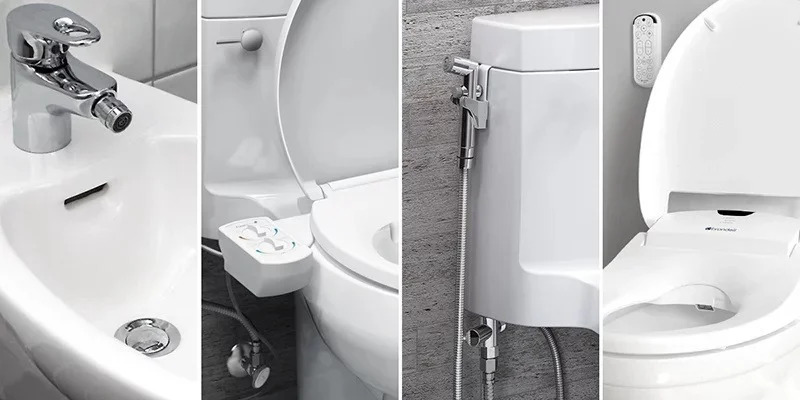

Buttons with braille 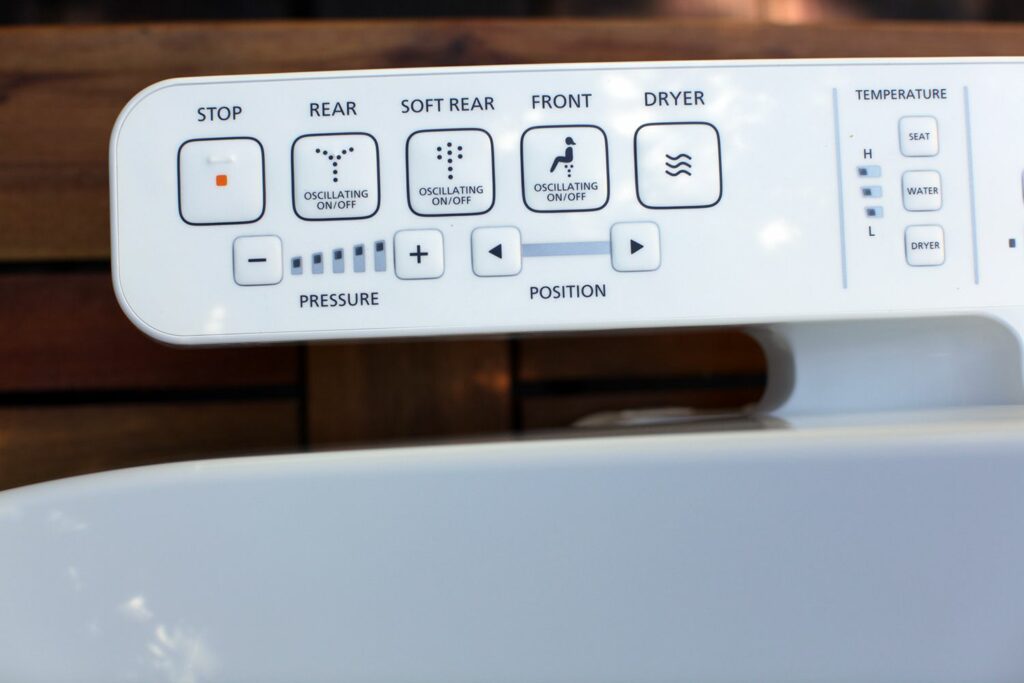
When it comes to utility and usability, not only are bidets a sanitary option to toilet paper, but they are also helpful to blind people and people with dexterity or mobility issues like ASL. Instead of being left unhygienic and needing the help of someone else, bidets allow disabled users to practice bathroom hygiene on their own and keep their privacy and dignity.
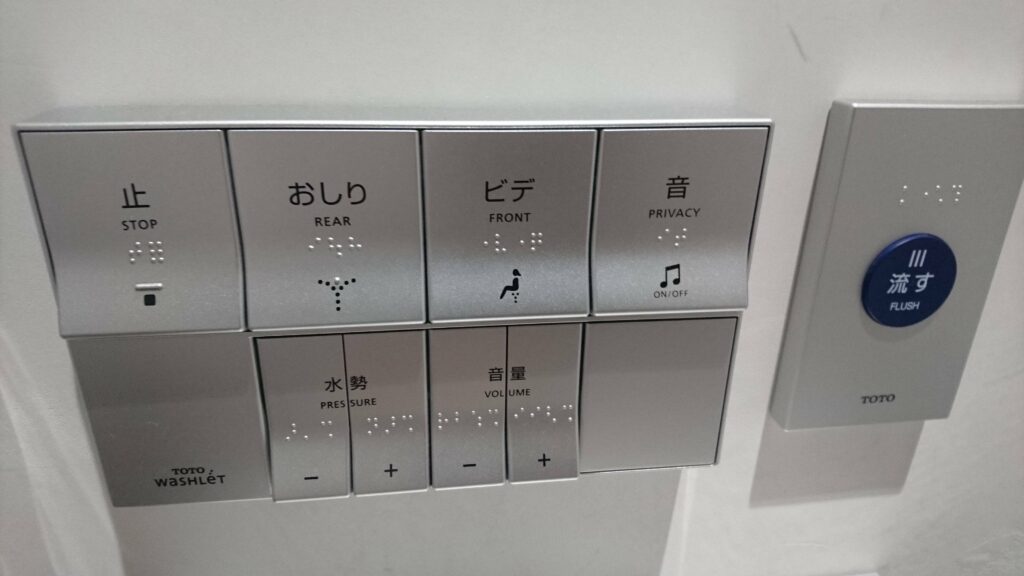
In addition, bidets have focused on a functional solutions model today. Users can control features like water pressure, nozzle position, heated seat, and dryer through a control panel based on one’s needs. Some control panels now include braille. If desired, they can also play sounds to muffle embarrassing noises. Thus, modern bidets overcome physical limitations and mental health like social anxiety disorder to help practice basic hygiene.
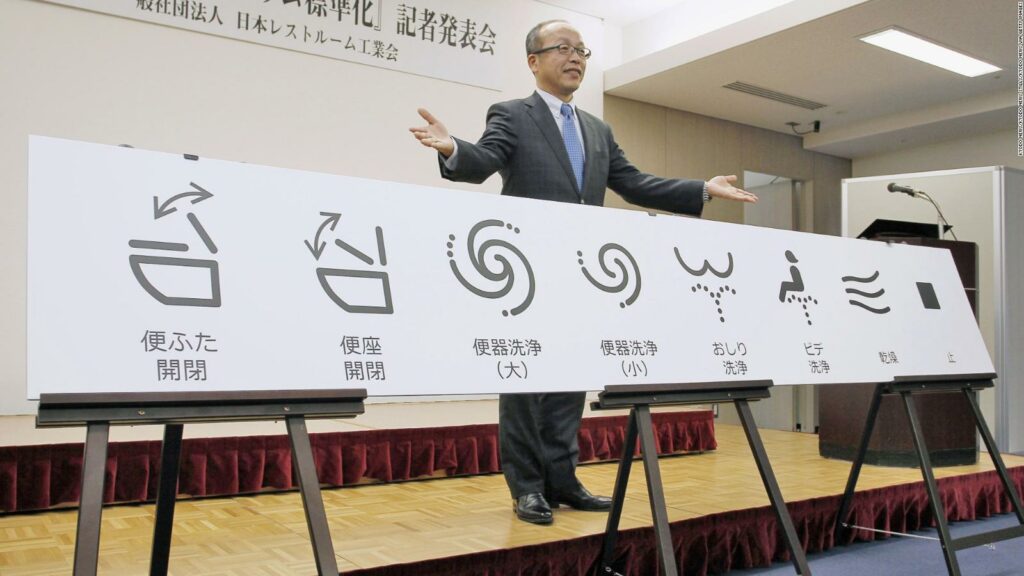
Standardized pictograms on toilet control panels released by the Japan Sanitary Equipment Industry Association 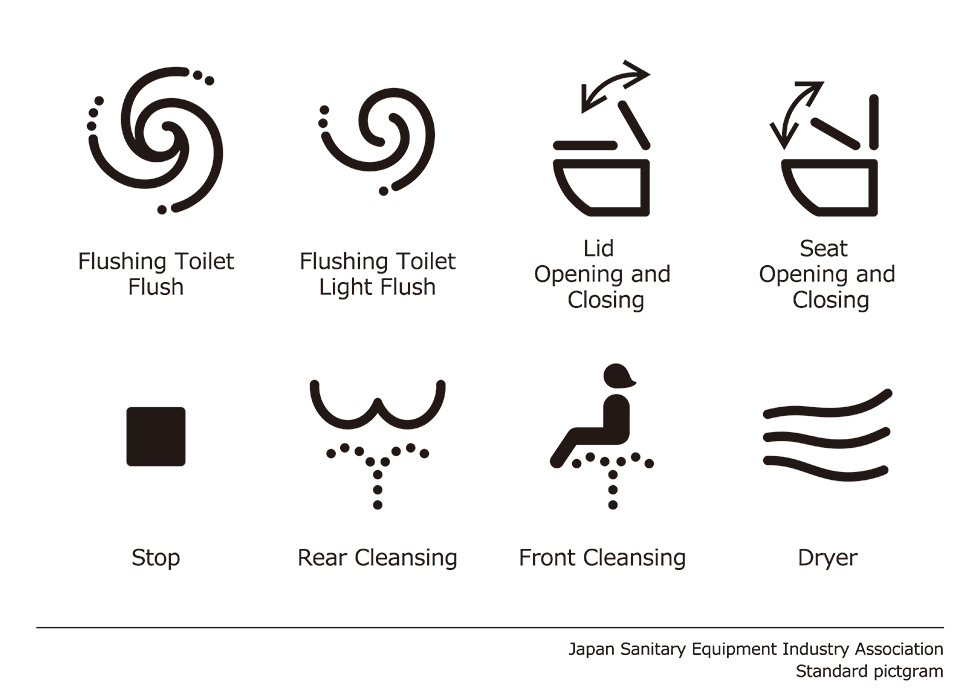
Standard pictograms on toilet control panels in Japan
Over the years, bidets have become more intelligent and advanced. As a result, the controls panels have also become complicated, and people have complained about the confusing buttons. In 2017, eight manufacturers in Japan finally agreed to unify the symbols on their toilet control panels to create “a toilet environment that anyone can use with confidence.” Standardizing the pictograms increases the usability and accessibility of the product. It also means that the companies have started emphasizing and implementing social models, making the pictograms universal across the country and overseas, and creating a more accessible environment for everyone. Now, illiterate people and foreign visitors no longer need to panic when they see and use one.
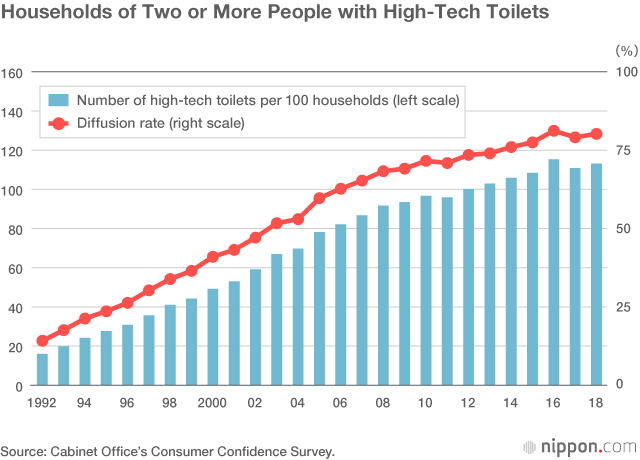
Today, a bidet has become an integral part of the modern bathroom. Depending on the brand and features, a regular bidet can cost from $200 to $700 or more. For high-end models with additional features, the price can go up to thousands. A 2018 study shows that 80.2% of Japanese households have a bidet installed. On average, there are 113 bidets per 100 homes. It also suggests that desirability and affordability are high among consumers in Japan.
In conclusion, bidets offer a superior cleaning and accessible experience to everyone, especially for disabled people. With bidets, people with ASL and blind people can maintain bathroom hygiene private and keep their dignity. Standardizing the icons on the control panels also allows foreign users to use a bidet comfortably. Unfortunately, only 12.1% of Americans have access to a bidet due to the lack of exposure to bidets. We hope to see the bidet boom happens in the US soon.
References
- How Japan’s music-playing, water-spraying TOTO toilets took over the world
- Pictograms of the Toilet Operation Unit
- High-Tech Toilets Become Standard Household Equipment in Japan
- What are Bidets and Bidet Toilet Seats?
- THE SURPRISING HISTORY OF THE BIDET
- Bidets: A Disability Friendly Way to Go
- Bidet Seats Are Great for People with Disablities
- WHY AMERICANS DON’T USE BIDETS (AND WHY WE SHOULD)